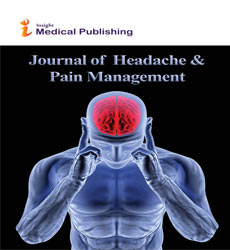Abstract
Neuroimaging in Headache Disorders
The differential diagnosis for headache is one of the longest in all of medicine, with more than 300 types. Most headaches can be diagnosed correctly without any investigations or testing at all. Utilizing a detailed history mostly based on ICHD 3 Beta diagnostic criteria (14 groups and Appendix/Research criteria) and physical and neurological examinations are all that is necessary in daily practice for diagnosis. In some cases, however diagnostic testing is necessary to distinguish primary headaches like migraine or tension from those secondary headaches that have similar features. Only a small percentage of headache patients require neuro imaging investigations and clinician must make decisions on a case by case basis. In ICHD 3 Beta, comprising 14 groups and an appendix section, no group specifically discusses red flags causing life and vision threatening lesions. Red flags are present in all these groups and it is so scary that ominous disorders like brain tumours, AVMs, Chiasmal lesions, ICA dissection, IIH, CVT etc. can present as primary headache disorders like migraine, tension or trigeminal autonomic cephalalgias. There are some reasons why clinicians frequently order imaging and other tests in headache practice-the quest for diagnostic certainty, it is better to impute disease than to risk overlooking it, busy practice conditions in which tests are ordered as a short cut, high patient expectations, financial incentives, medico legal concerns, the attitude and demands of patients and families and the practice of defensive medicine. The value of any imaging study is determined in large part by the quality of the scanner, the sophistication of the software and the expertise of the person reading the scan. Even the best quality scan may be inadequate if it is the wrong study for the clinical question in hand.
Author(s):
MV Francis
Abstract | Full-Text | PDF
Share this

Abstracted/Indexed in
- Google Scholar
- Directory of Research Journal Indexing (DRJI)
- WorldCat
- Secret Search Engine Labs
Open Access Journals
- Aquaculture & Veterinary Science
- Chemistry & Chemical Sciences
- Clinical Sciences
- Engineering
- General Science
- Genetics & Molecular Biology
- Health Care & Nursing
- Immunology & Microbiology
- Materials Science
- Mathematics & Physics
- Medical Sciences
- Neurology & Psychiatry
- Oncology & Cancer Science
- Pharmaceutical Sciences
